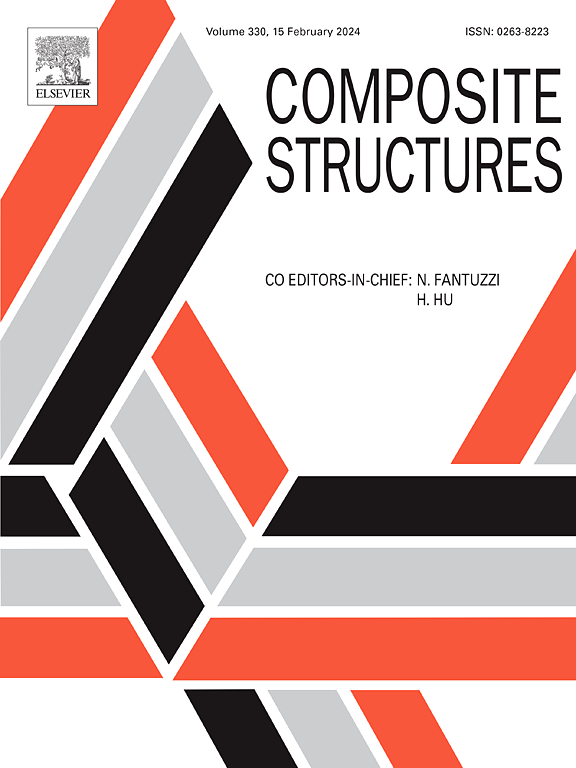基于梯度界面的应力相关多材料结构拓扑优化
IF 6.3
2区 材料科学
Q1 MATERIALS SCIENCE, COMPOSITES
引用次数: 0
摘要
航空航天部件,如涡轮盘,承受复杂的负载和极端的热条件。应力相关的多材料拓扑优化(MMTO)允许这些组件的卓越性能设计。此外,大多数关于MMTO的研究都集中在连续或单梯度界面上,多梯度设计在很大程度上仍未被探索。提出了一种梯度界面多材料结构的应力最小化拓扑优化方法。基于标准固体各向同性材料惩罚法(SIMP)和分段Heaviside投影建立了多梯度材料插值方法,并通过母材梯度比定义梯度材料的数量和性质。值得注意的是,所提出的方法只需要一组密度变量。采用p-范数函数计算整体应力,采用伴随法计算单元灵敏度。设计变量被过滤。以涡轮盘和l型支架为例验证了该方法的有效性。结果表明,具有梯度界面的多材料结构可以有效地描述和优化。梯度材料的数量和力学性能是可以精确定义的。单梯度和双梯度结构的最大应力均低于非梯度结构,说明采用梯度界面的拓扑设计提高了结构强度。该方法通过在多材料界面上分布多梯度材料,有效地降低了应力水平。本文章由计算机程序翻译,如有差异,请以英文原文为准。
Stress-related multi-material structures topology optimization with gradient interfaces
Aerospace components, such as turbine disks, endure complex loads and extreme thermal conditions. Stress-related multi-material topology optimization (MMTO) allows for the superior performance design of these components. Additionally, most studies on MMTO focus on continuous or single-gradient interfaces, multi-gradient design remains largely unexplored. This study proposes a stress minimization topology optimization method for multi-material structures with gradient interfaces. A multi-gradient material interpolation is established based on the standard solid isotropic material with penalization (SIMP) method and piecewise Heaviside projection, and the quantity and properties of gradient materials are defined by the gradient ratios of parent materials. Notably, the proposed method requires only a single set of density variables. The global stress is evaluated using the p-norm function, and element sensitivity is calculated with the adjoint method. Design variables are filtered. Turbine disk and L-bracket examples are presented to validate the effectiveness of the proposed approach. The results demonstrate that multi-material structures with gradient interfaces can be effectively described and optimized. The quantity and mechanical properties of gradient materials can be precisely defined. The maximum stress in single-gradient and double-gradient structures is lower than that in non-gradient structures, indicating that topology design with gradient interfaces enhances structural strength. The proposed method effectively reduces the stress level by distributing multi-gradient materials across multi-material interfaces.
求助全文
通过发布文献求助,成功后即可免费获取论文全文。
去求助
来源期刊

Composite Structures
工程技术-材料科学:复合
CiteScore
12.00
自引率
12.70%
发文量
1246
审稿时长
78 days
期刊介绍:
The past few decades have seen outstanding advances in the use of composite materials in structural applications. There can be little doubt that, within engineering circles, composites have revolutionised traditional design concepts and made possible an unparalleled range of new and exciting possibilities as viable materials for construction. Composite Structures, an International Journal, disseminates knowledge between users, manufacturers, designers and researchers involved in structures or structural components manufactured using composite materials.
The journal publishes papers which contribute to knowledge in the use of composite materials in engineering structures. Papers deal with design, research and development studies, experimental investigations, theoretical analysis and fabrication techniques relevant to the application of composites in load-bearing components for assemblies, ranging from individual components such as plates and shells to complete composite structures.
 求助内容:
求助内容: 应助结果提醒方式:
应助结果提醒方式:


